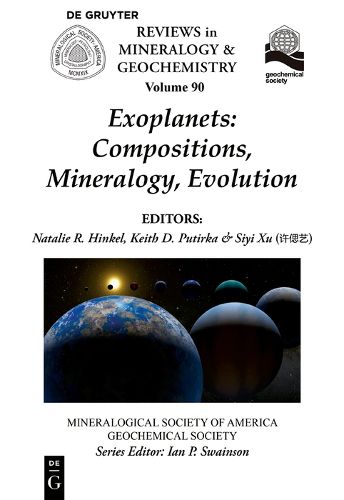Readings Newsletter
Become a Readings Member to make your shopping experience even easier.
Sign in or sign up for free!
You’re not far away from qualifying for FREE standard shipping within Australia
You’ve qualified for FREE standard shipping within Australia
The cart is loading…






This title is printed to order. This book may have been self-published. If so, we cannot guarantee the quality of the content. In the main most books will have gone through the editing process however some may not. We therefore suggest that you be aware of this before ordering this book. If in doubt check either the author or publisher’s details as we are unable to accept any returns unless they are faulty. Please contact us if you have any questions.
The focus for RiMG volume 90 is on rocky exoplanets because the search for truly Earth-like planets is of special interest. The goal is to motivate communication between the disciplines so as to make the best use possible of existing data and data yet to be collected by the James Webb and the Nancy Grace Roman Space Telescopes, since the astronomy community is gathering data on stars and exoplanets at an accelerating rate. Such data now include exoplanet size and mass (i.e., density) as well as their atmospheric compositions, which are collectively telltale of mineralogy and evolution. Much of what is published may still fall in the realm of educated speculation, but our conjectures are metamorphosing into testable hypotheses.
There is now a remarkably large amount of astronomical data (with even more on the way) that geochemists and petrologists can make much use of. But just as astronomers may benefit from geologic insights, geologists need our colleagues in astronomy to help interpret their data and their underlying implications to better understand its astronomical context. Our hopes for this volume will be fulfilled if readers initiate their own analyses of what at present may seem like novel or unusual data, and if new collaborations between academic departments and subfields are forged.
$9.00 standard shipping within Australia
FREE standard shipping within Australia for orders over $100.00
Express & International shipping calculated at checkout
This title is printed to order. This book may have been self-published. If so, we cannot guarantee the quality of the content. In the main most books will have gone through the editing process however some may not. We therefore suggest that you be aware of this before ordering this book. If in doubt check either the author or publisher’s details as we are unable to accept any returns unless they are faulty. Please contact us if you have any questions.
The focus for RiMG volume 90 is on rocky exoplanets because the search for truly Earth-like planets is of special interest. The goal is to motivate communication between the disciplines so as to make the best use possible of existing data and data yet to be collected by the James Webb and the Nancy Grace Roman Space Telescopes, since the astronomy community is gathering data on stars and exoplanets at an accelerating rate. Such data now include exoplanet size and mass (i.e., density) as well as their atmospheric compositions, which are collectively telltale of mineralogy and evolution. Much of what is published may still fall in the realm of educated speculation, but our conjectures are metamorphosing into testable hypotheses.
There is now a remarkably large amount of astronomical data (with even more on the way) that geochemists and petrologists can make much use of. But just as astronomers may benefit from geologic insights, geologists need our colleagues in astronomy to help interpret their data and their underlying implications to better understand its astronomical context. Our hopes for this volume will be fulfilled if readers initiate their own analyses of what at present may seem like novel or unusual data, and if new collaborations between academic departments and subfields are forged.